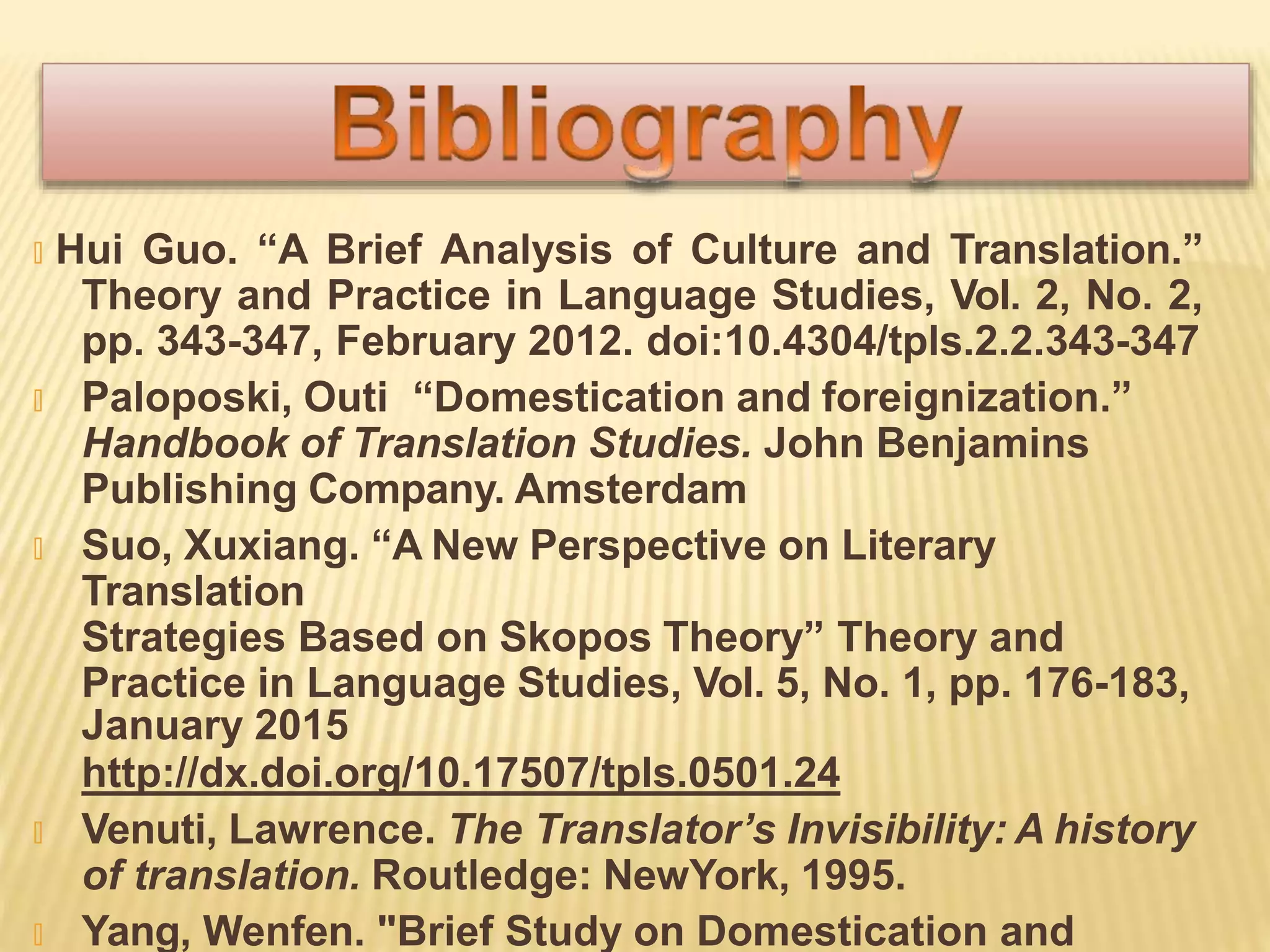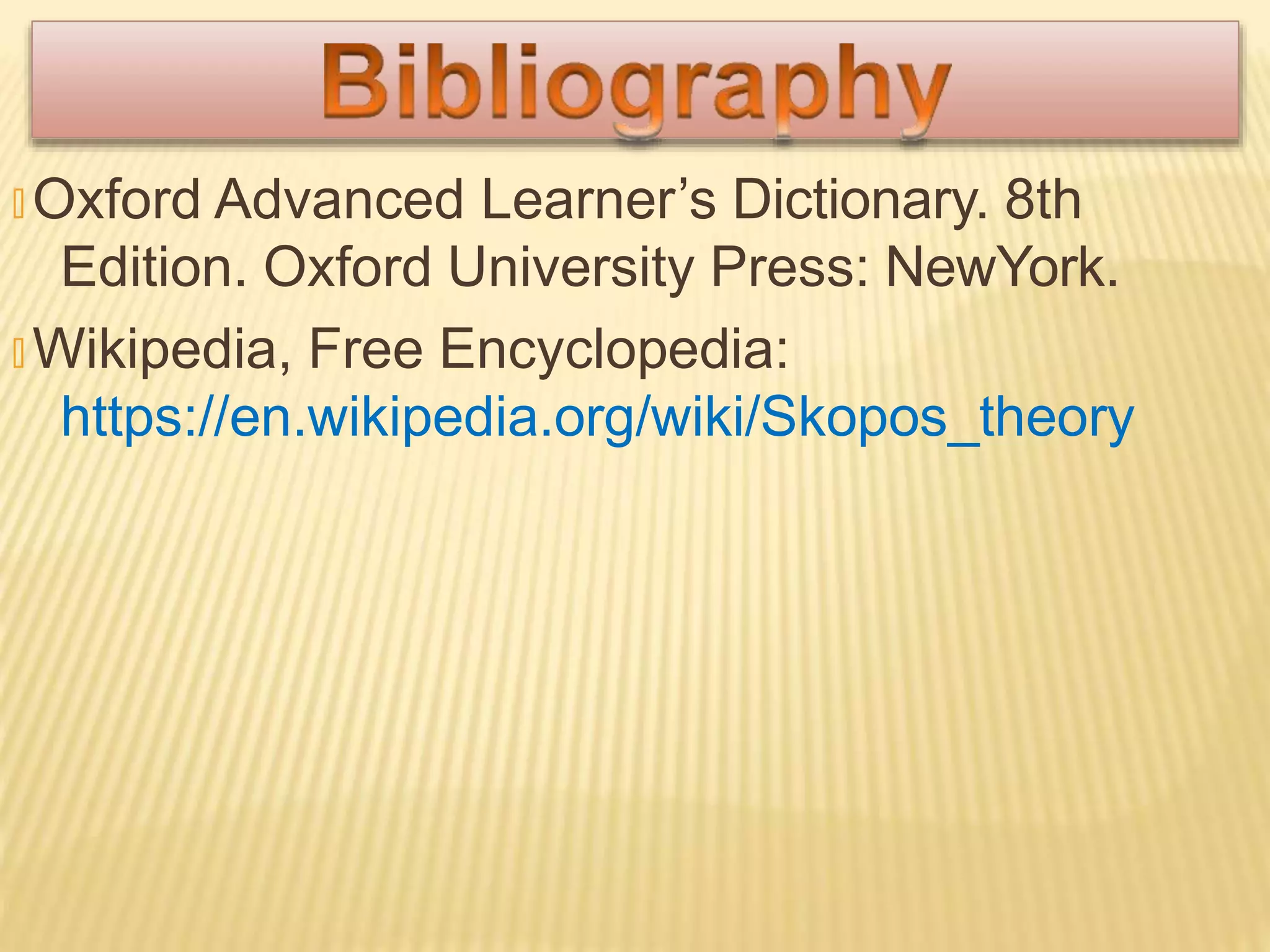Foreignization and domestication are translation strategies that deal with cultural differences between the source and target texts. Foreignization aims to preserve foreign elements of the source text and culture, while domestication minimizes foreign elements to make the text seem more natural and familiar to the target audience. These concepts originated from the work of Lawrence Venuti, who argued for foreignization over domestication. Both have benefits and drawbacks, and their use depends on the purpose or "skopos" of the particular translation based on the functionalist approach.
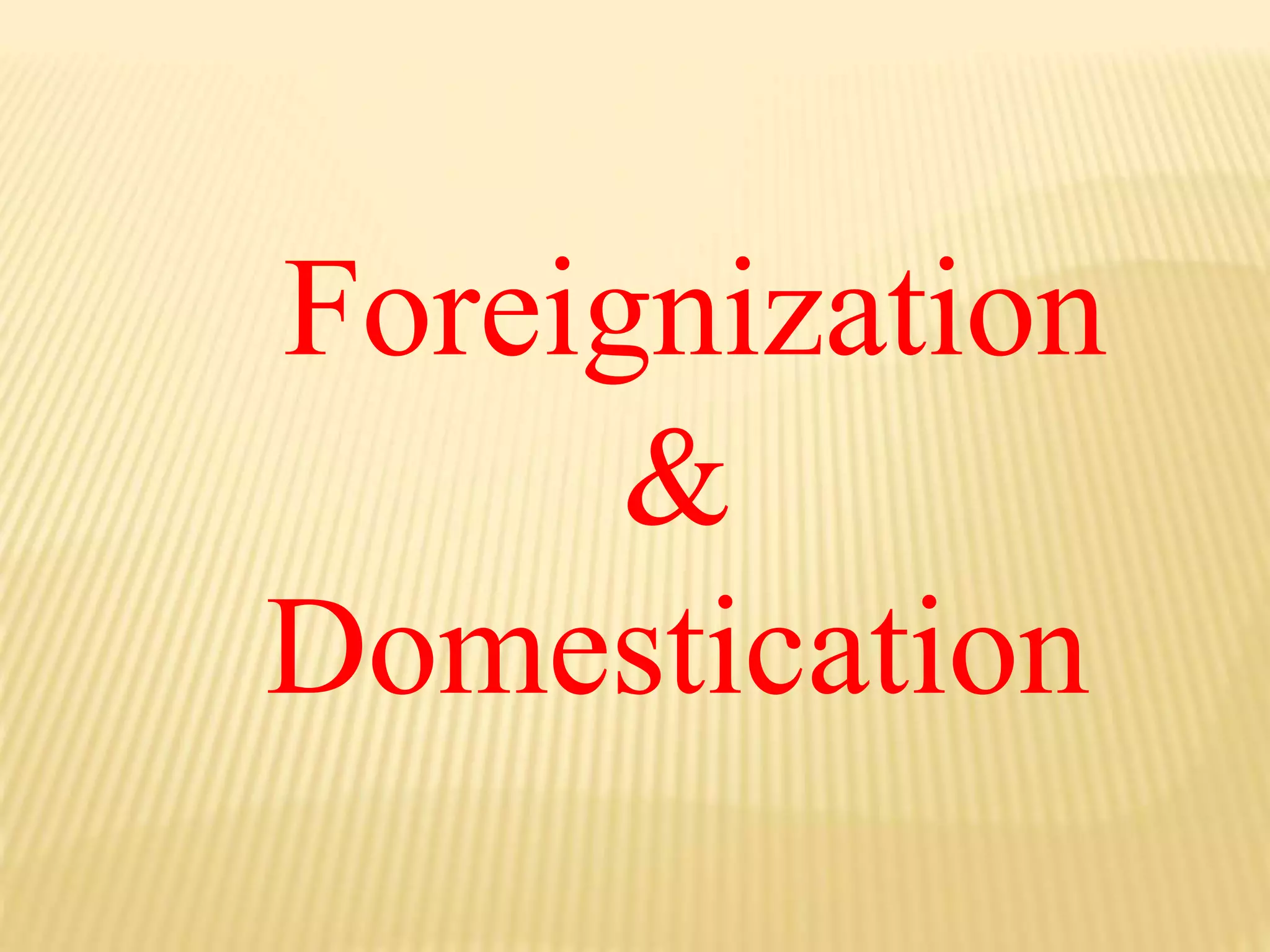


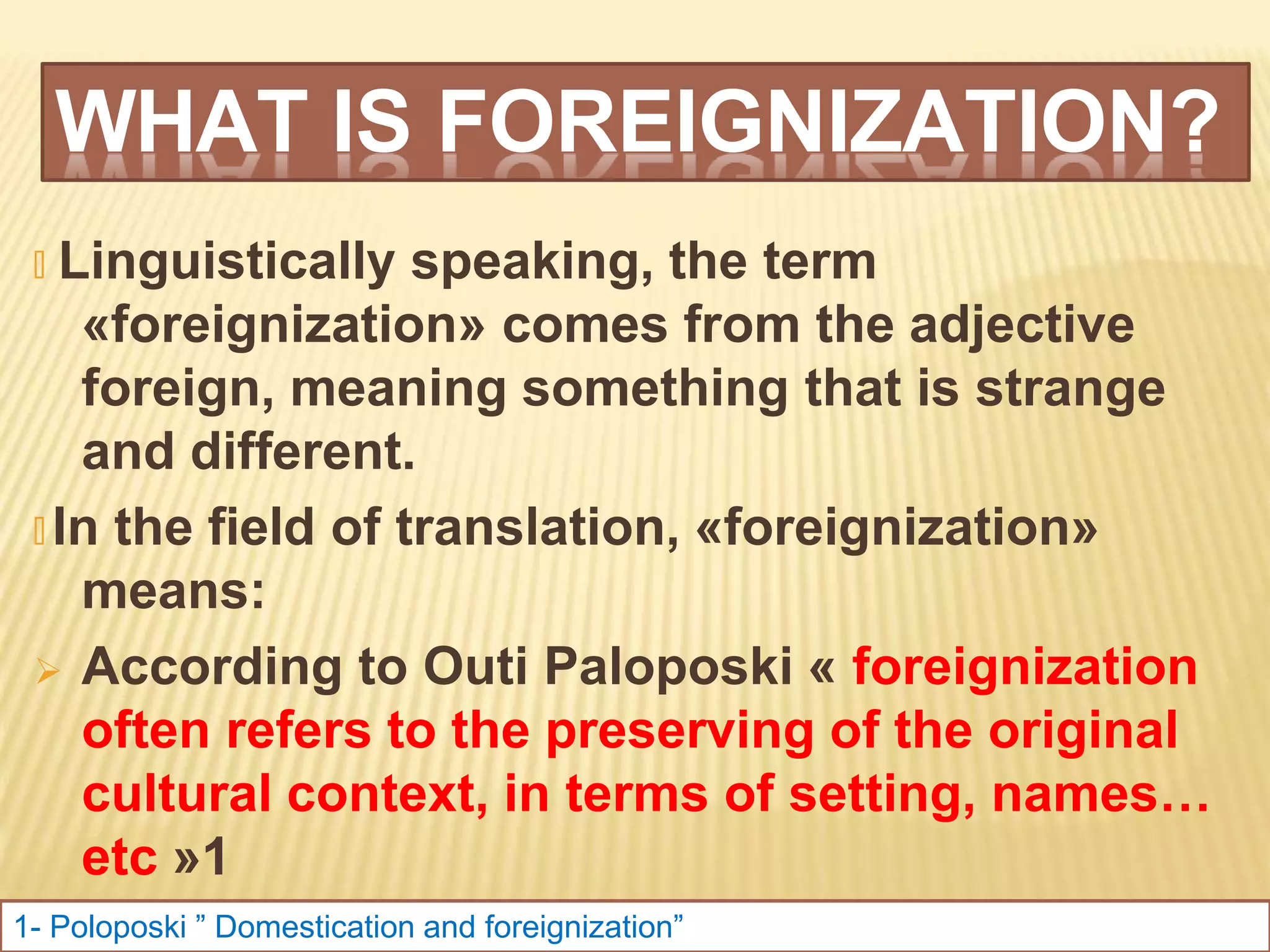


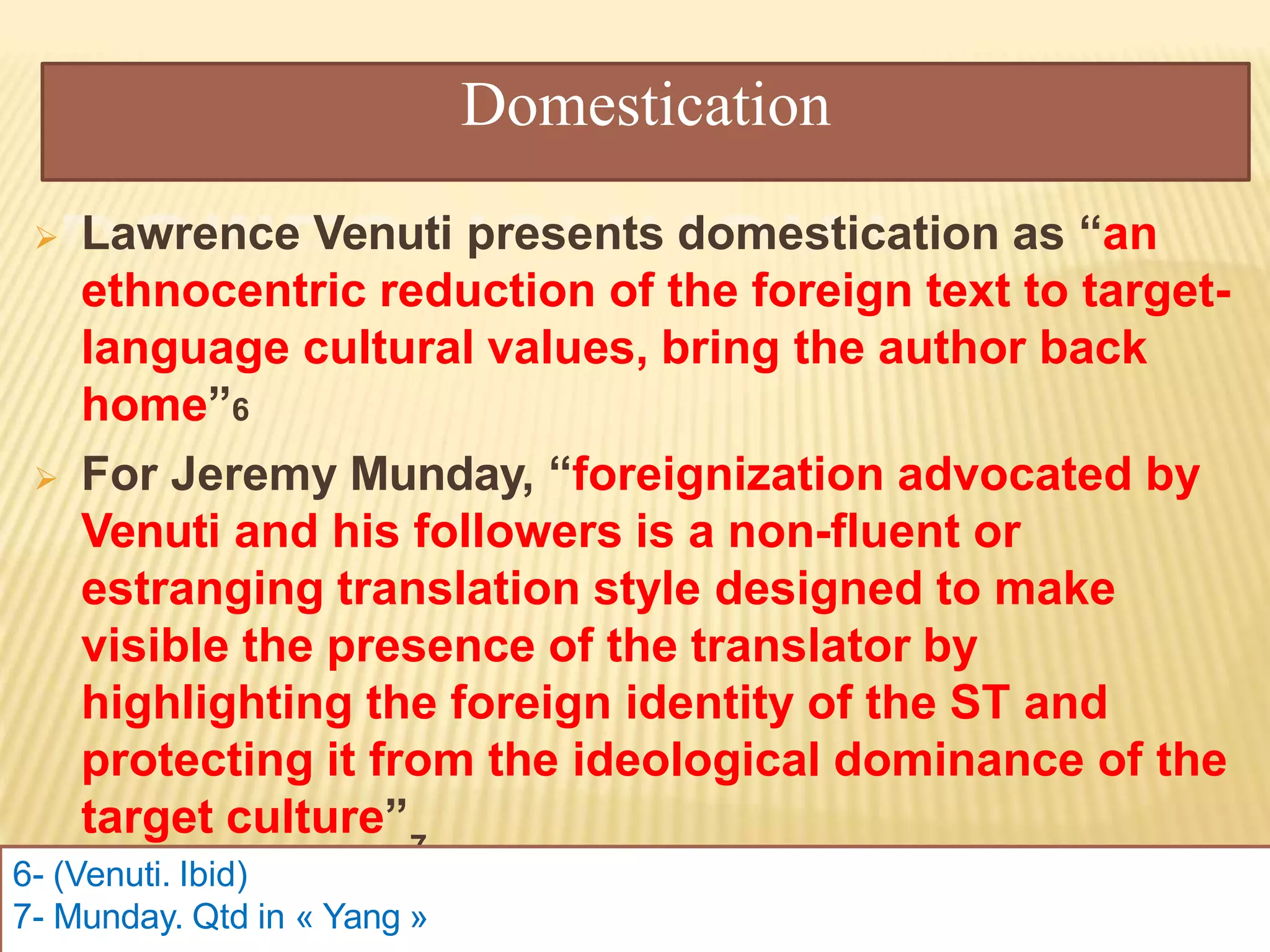
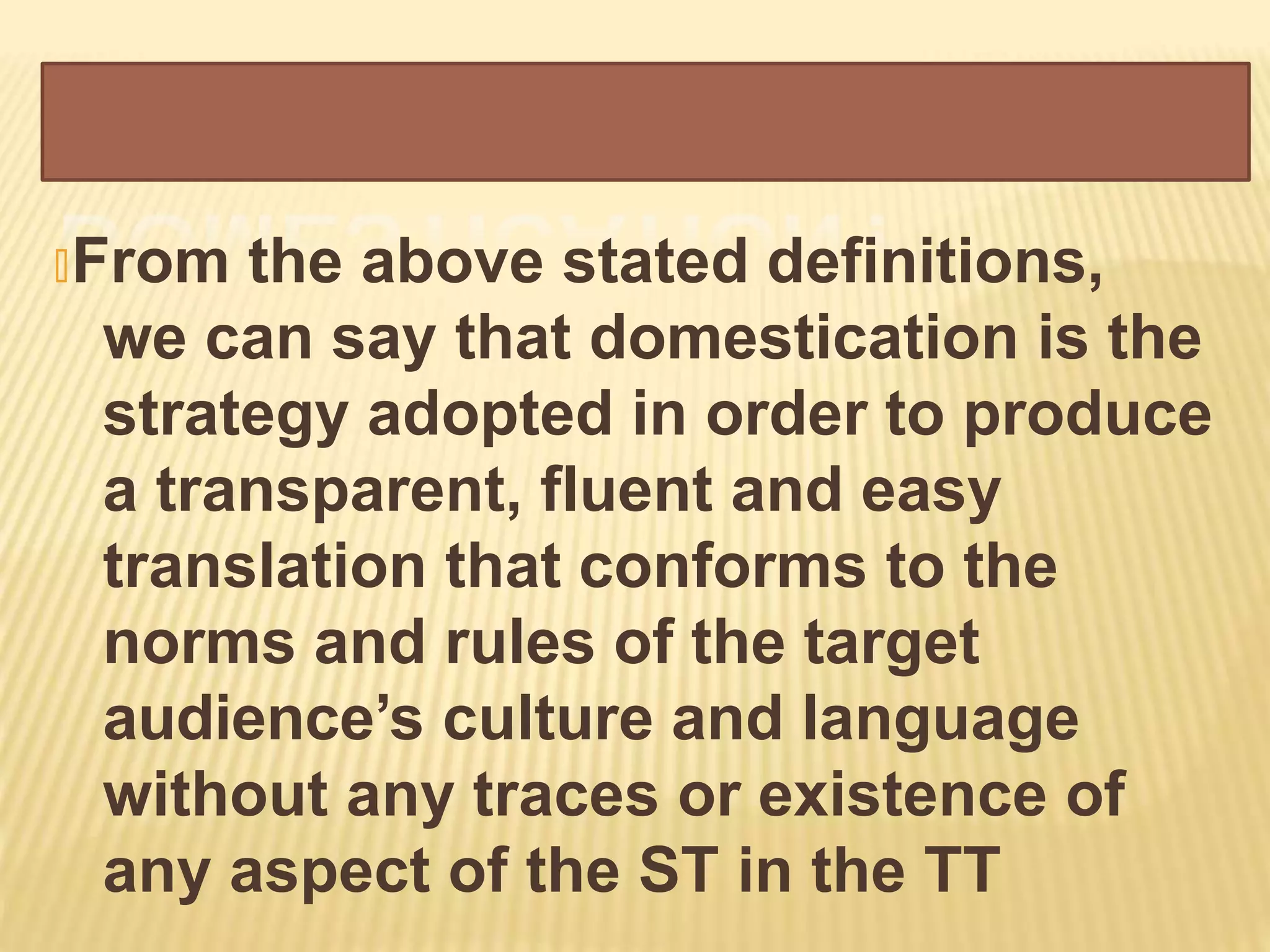
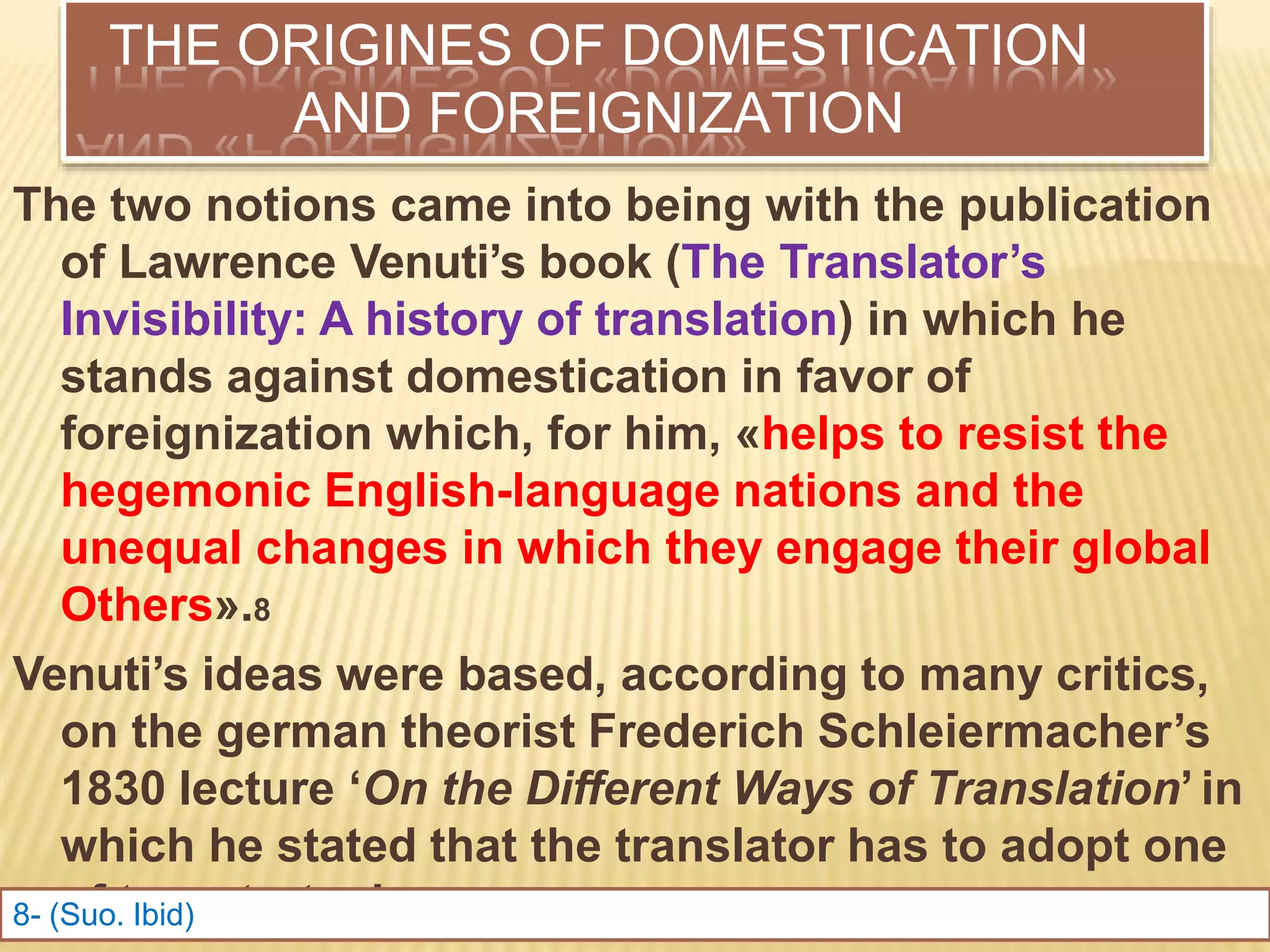
![ Either « to leave the author in peace and move
the audience towards him/[her] »
(Foreignization)
Or « to leave the audience in peace and move
the author towards them »9 (Domestication)
o In fact, Ventu is said just to have denominated
both ideas and adopted them to face Eugine
Nida’s ‘Dynamic Translation’ and the Anglo-
American translation strategies accordingly.
But generally speaking, Venuti is considered as
the founding father of « domestication and
foreignization. »](https://image.slidesharecdn.com/foreignizationanddomestication-230418011447-a0f4cbd0/75/Foreignization-and-Domestication-pptx-10-2048.jpg)
![THE ORIGINES OF «DOMESTICATION» AND
«FOREIGNIZATION»
🞭 Venuti stated that the translator can do
either of two things:
I. « To make him/herself invisible to his/her
readers by making the text reads fluently;
that is to leave no traces or influence of the
SL in the target text » (domestication)
II. « [Or] to make him/herself visible by
showing that the text is a translation,
through leaving the traces of the SL and
culture showing up in the text »10
(foreignization)
10- (Suo. Ibid)](https://image.slidesharecdn.com/foreignizationanddomestication-230418011447-a0f4cbd0/75/Foreignization-and-Domestication-pptx-11-2048.jpg)


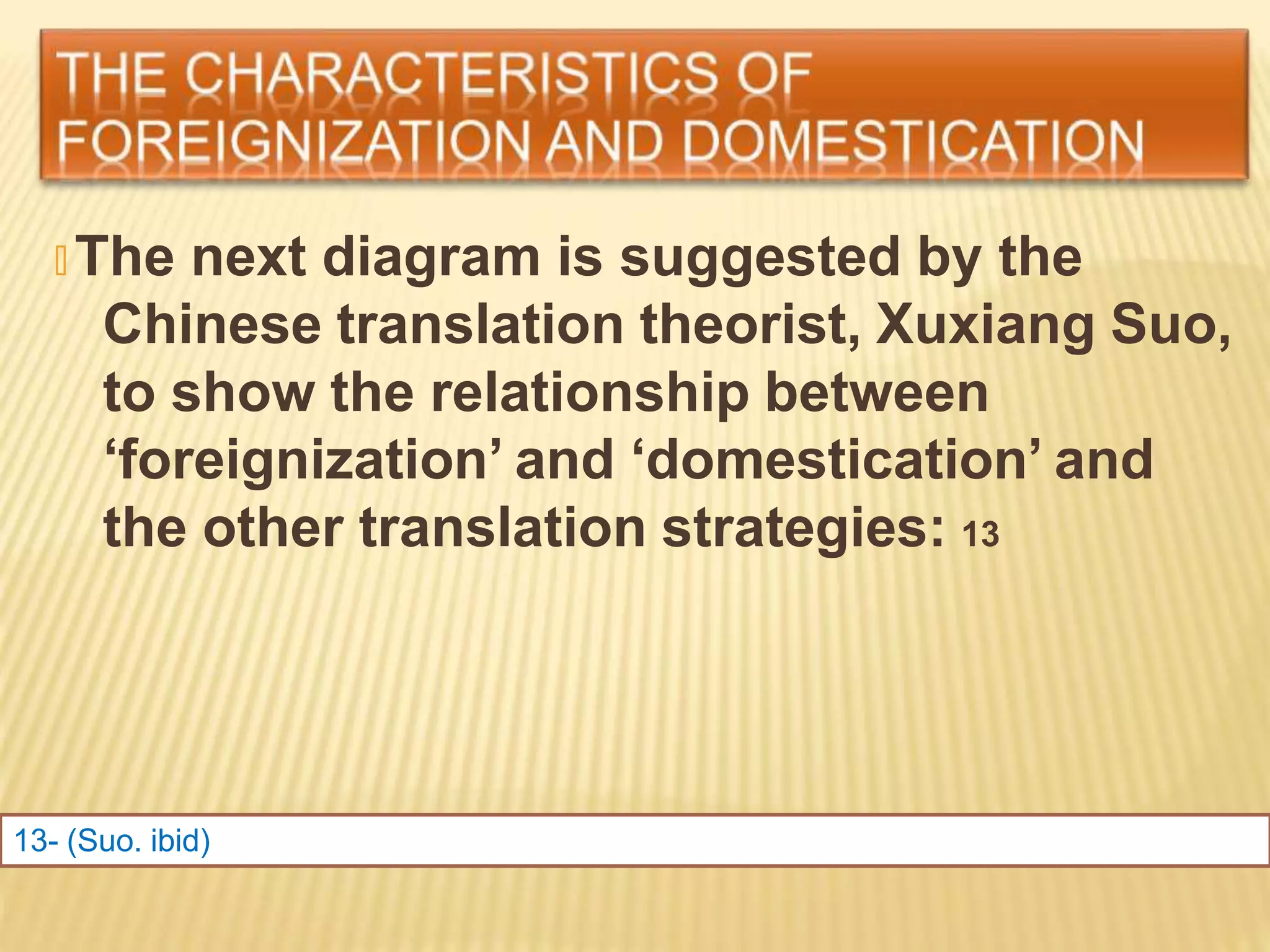


![🞭 The Chinese translation theorist Hui Guo stated that “The
purpose of translation is to promote understanding and
communication between different linguistic and cultural
communities.” In order for translation to fulfill this purpose of
communication, “Linguistic competences are not the only
requirement[…]-though the most important one- another
important requirement is [having] enough acquaintance with
the target culture” 14
🞭 Xuxiang Suo argued that «domestication strategy helps the
readers overcome both linguistic and cultural barriers and
make the target text more readable and easier to understand
»15, while the function of Foreignization, on the contrary, is to
introduce the reader to the source culture and deepen their
knowledge about the ‘other’ foreign linguistic and cultural
values, traditions, expressions, idioms…etc.
14 (Paloposki. Ibid)](https://image.slidesharecdn.com/foreignizationanddomestication-230418011447-a0f4cbd0/75/Foreignization-and-Domestication-pptx-17-2048.jpg)
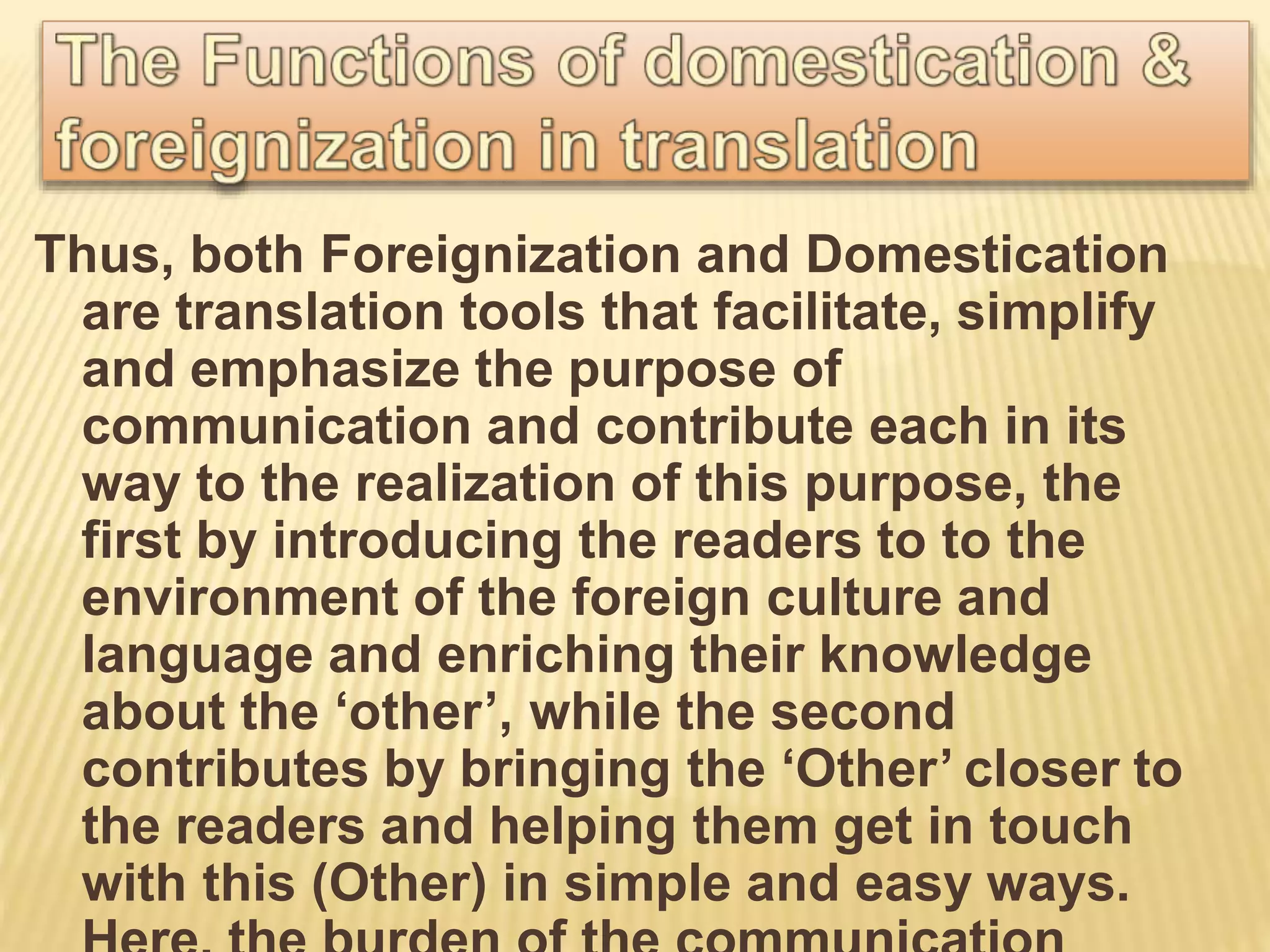
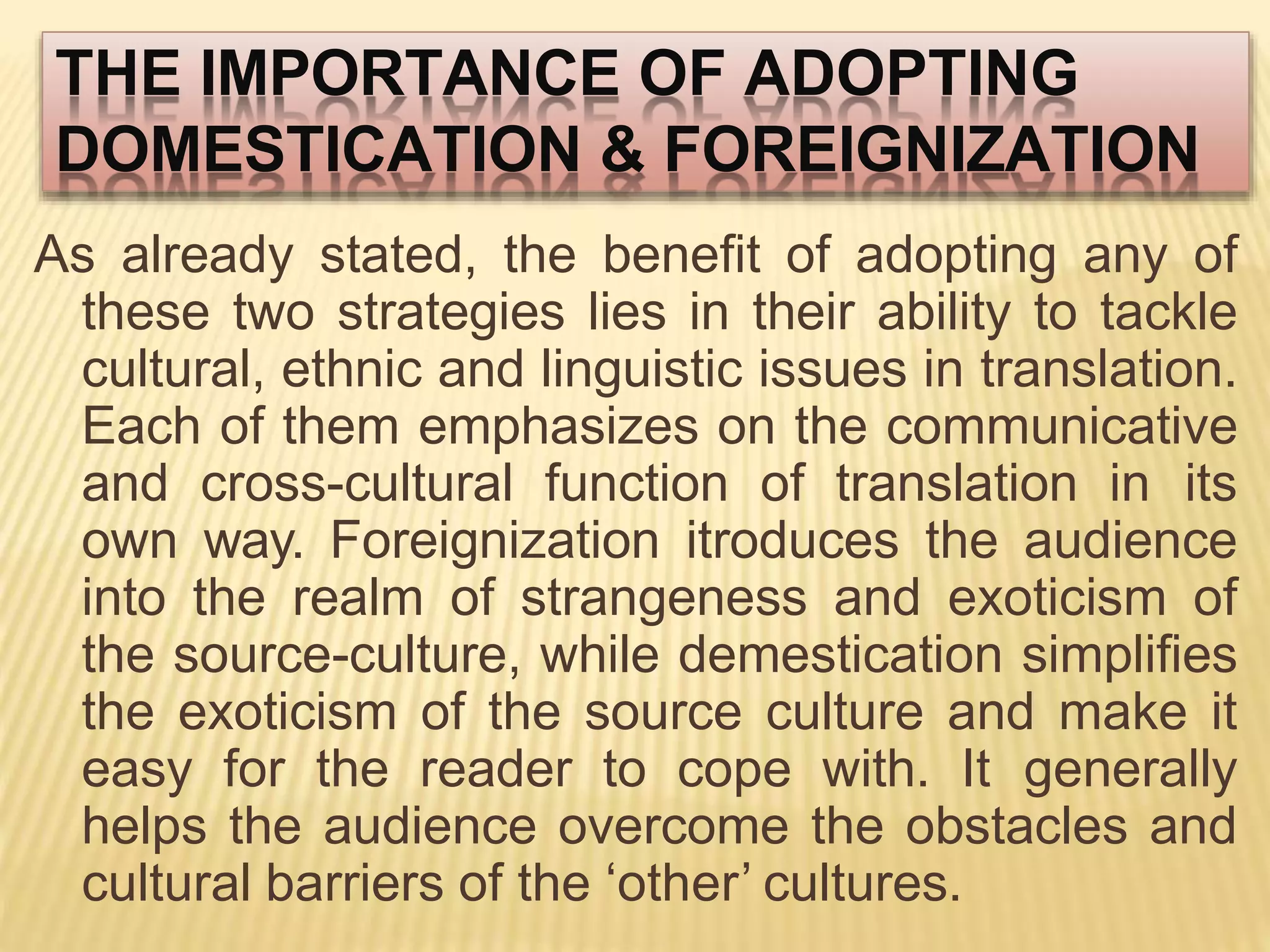
![🞭 1- The Skopos theory: the word ‘Skopos’ is derived from Greek
and denotes ‘purpose’
🞭 In the fiels of translation: Skopos theory is a concept from the
field of translation studies. It provides an insight into the nature
of translation as a purposeful activity; [purpose driven], which is
directly applicable to every translation project.
🞭 It was established by the German linguist Hans Vermeer and
comprises the idea that translationg and interpreting
🞭 should primarily take into account the function of both
the source and target text. 15
🞭 The functionalist approach, states Xuxiang Suo, “emerged [in
translation] in order to solve and answer the questions
concerning Foreignization and Domestication and their use and
function in translation”16
15 https://en.wikipedia.org/wiki/Skopos_theory
16 (Suo. ibid)](https://image.slidesharecdn.com/foreignizationanddomestication-230418011447-a0f4cbd0/75/Foreignization-and-Domestication-pptx-20-2048.jpg)
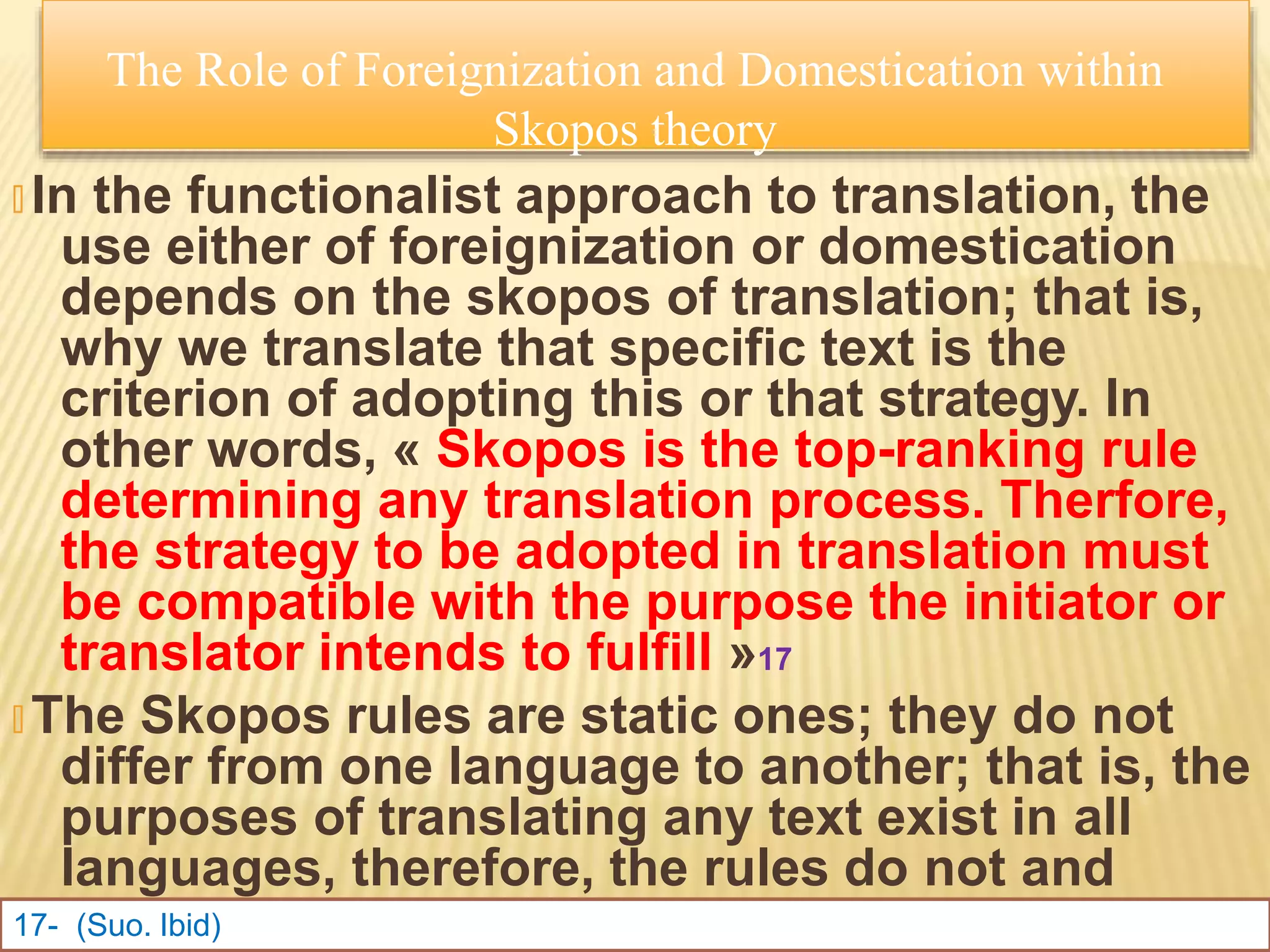
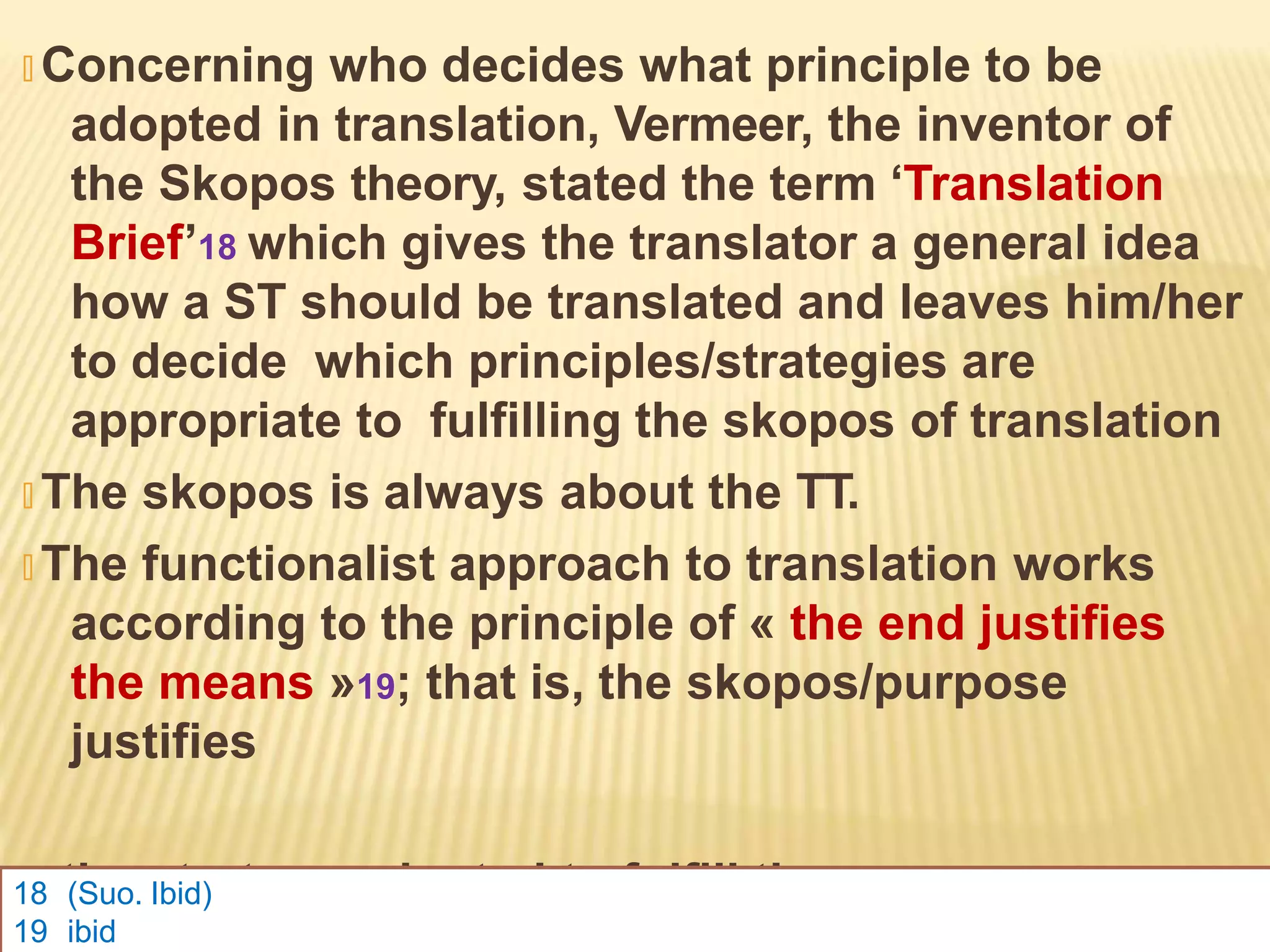
![🞭 In the Skopos theory, there is only one
criterion to measure the quality of
translation, which is « the adequacy » of
the TT. This means that « the target text is
considered adequate as long as it fulfills
its skopos of translation regardless
whether it is equivalent to the ST [or not]
» 20
20- (Suo. Ibid)](https://image.slidesharecdn.com/foreignizationanddomestication-230418011447-a0f4cbd0/75/Foreignization-and-Domestication-pptx-23-2048.jpg)
![From the above mentioned points, we can say
that the functionalist approch to translation,
introduced by Vermeer, doasn’t prefer
domestication or foreignization, it rather
considers both of them as translation tools that
can be adopted either individually or mutually
according to the Skopos of translation. They
have different functions inside translation. «
both of them have positive and negative points.
We should [however] take a dynamic view
to determin which strategy we should use
in
translation »20
20- (Suo. Ibid)](https://image.slidesharecdn.com/foreignizationanddomestication-230418011447-a0f4cbd0/75/Foreignization-and-Domestication-pptx-24-2048.jpg)
